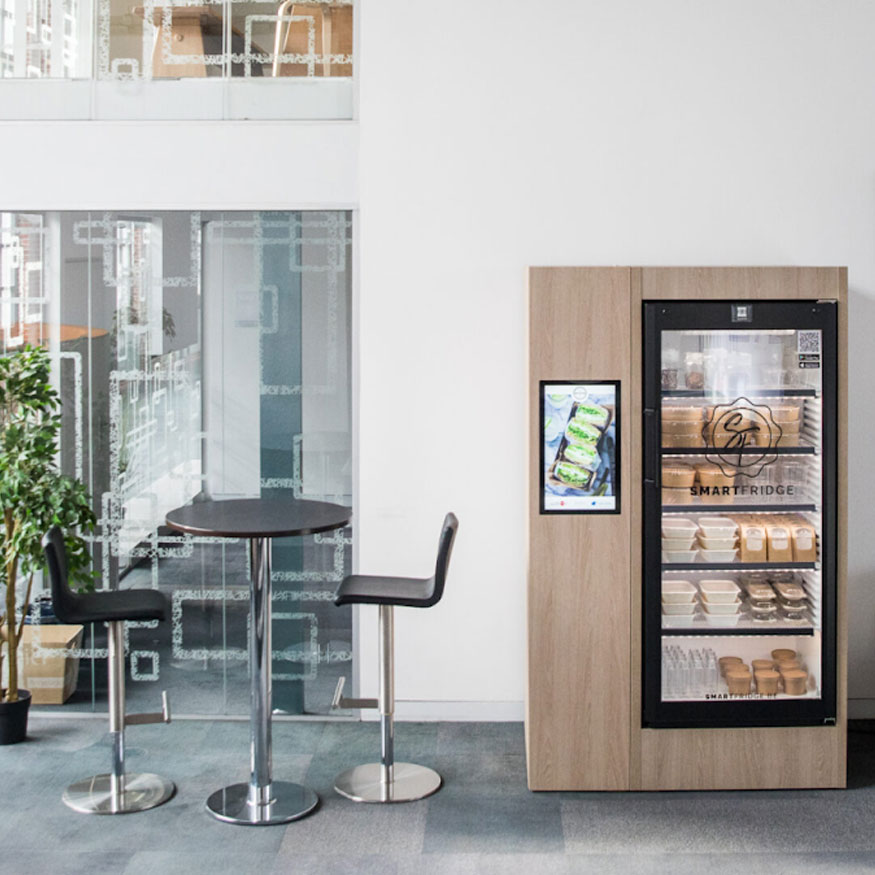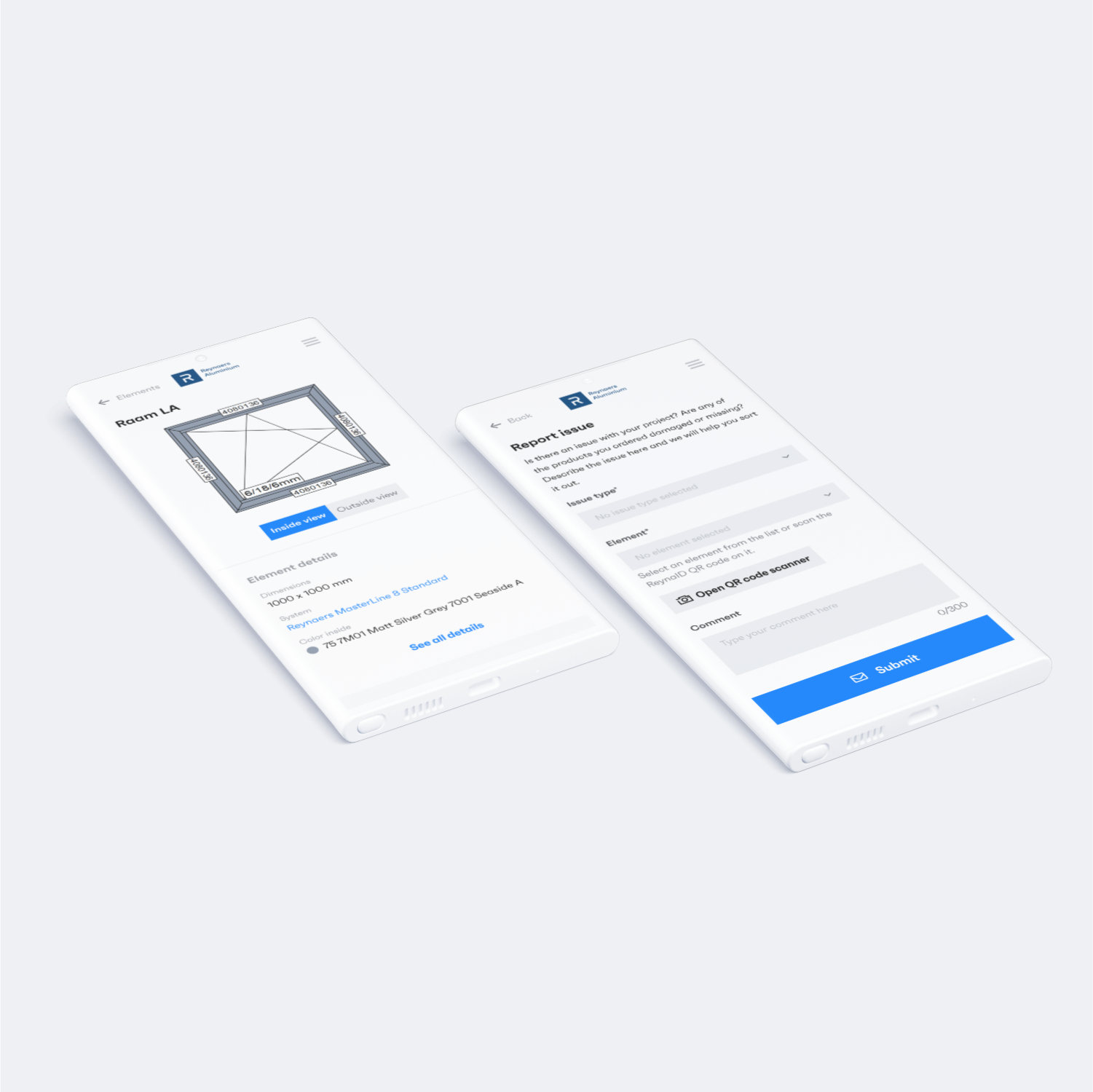Find out how we helped a classic caterer flip their business model to smart fridges providing a wealth of insights.

From state-of-the-art satellite tech to groundbreaking missions, ESA is always trying to push the boundaries of space exploration. Its mission to shape Europe’s space industry and ensure those investments also benefit people on Earth, make it an enticing laboratory for innovation. Nevertheless, these missions involve significant financial and intellectual resources to make sure equipment can withstand the harsh conditions in space for extended periods. It’s in this context that the trend of reusing components, like reusable rocket boosters are rapidly gaining momentum. This makes maintenance and early defect detection all the more important.
Together with Engie Laborelec, Fixar and SABCA Limburg, Verhaert Digital developed an AI-powered robot-assisted non-destructive system to investigate composite structures both for surface and structural (internal) defects.
The challenge
Manual inspection is prone to human error due to lack of experience, stress, fatigue or burnout. In addition, the ongoing labor costs of human inspection run high very quickly. Although it’s not a straightforward task to reduce inspection time and limit dependency on highly trained experts on-site, deploying a reliable automated software inspection tool proves very valuable. With non-intrusive inspection methods, cost-effectiveness, and real-time feedback, AI ensures prompt standardized, corrective actions and scalability for varying production demands. The collaborative use of AI and human expertise enhances overall defect detection capabilities in industries, providing a comprehensive and reliable solution.
That’s why ESA set up the SmartNDT program, supporting companies willing to collaborate with the ESA on research projects. Together with ENGIE Laborelec, SABCA and Fixar, Verhaert Digital carried out the development of an intelligent robot-assisted non-destructive system to investigate composite structures. In this project, Verhaert Digital will both build and train the AI part of the system. The team consists of experts in artificial intelligence and software engineering, as well as laser scanning and metrology engineers, enabled by the broad expertise within the Verhaert group.
The solution
Now onto the actual project! In the solution design process, we considered data type, volume and quality. For detecting structural defects from ultrasonic intensity images, we selected a convolutional neural network (CNN) architecture that we trained on custom defect-labeled data. The AI models are then used to estimate the probability that a region contains a defect. Classical image processing methods are then used to clearly separate clustered defects from each other and filter out the false positives. Our models show over 95% accuracy on testing data and the inspection tool achieves over 90% probability of defect detection.
Besides the automatic inspection feature, the end solution also requires a platform to retrain a model when new data is available, wrapped with an intuitive graphical user interface. We have basically transferred our cumulated AI expertise into a simple ‘Start training’ button. Moreover, a similar interface is included to preprocess the raw inspection sensor data into an AI training dataset. The AI platform can be as easily deployed locally or on a remote server (physical or cloud).
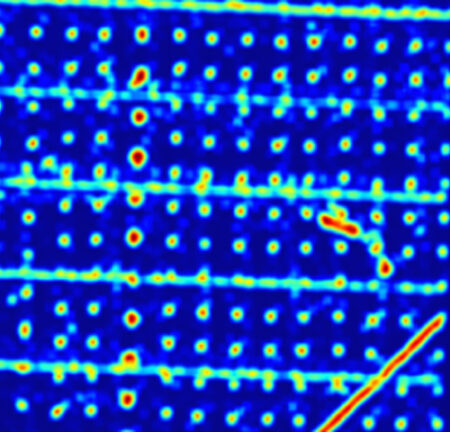
Defect probability map
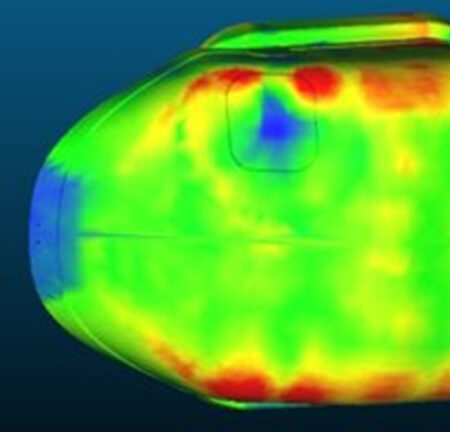
Sample curvature color map
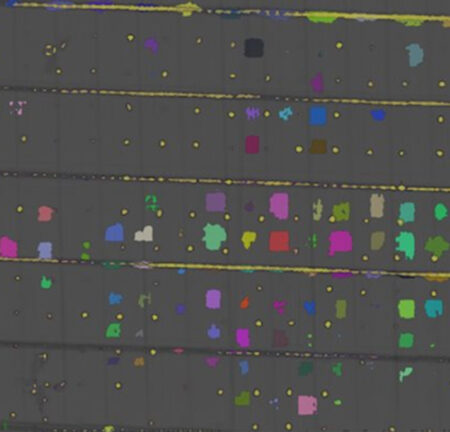
Defect segmentation
In the absence of labeled data for surface inspection, a learning-based algorithm cannot be developed. Therefore, we implemented an orchestrating front end on top of specialized off-the-shelf metrology software to take advantage of its proprietary backend algorithms and industry approved geometry inspection features. By doing so, we’re detecting surface defects or deviations in curvature and thickness, assessing material roughness or waviness and filtering regions based on geometric properties (ex. only selecting areas with high curvature).
The results of both surface and structural analysis are exported in a PDF report containing visual and numerical information.
The future
Training an AI model for defect inspection is ideal when the 2D image-like labeled data is available – single or multichannel (ex. hyperspectral, infrared, RGB color, grayscale, depth, ultrasound, thermography and others). The output of the AI analysis can be a basic binary classification (detection), multi-class classification, defect probability heatmap or a selection of isolated defect regions (segmentation), depending on the input data and on which method is more relevant to the inspection process.
Curious how such an AI platform can also help your business? Feel free to reach out!
Tell us everything!
We’d love to hear about your project and explore how we can help.
Continue reading
A platform connecting all stakeholders in construction boosting efficiency? It exists and it’s called DigiTrace.
